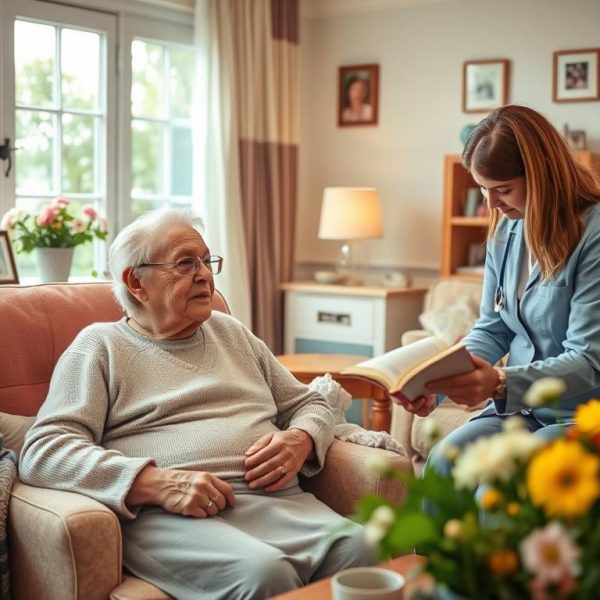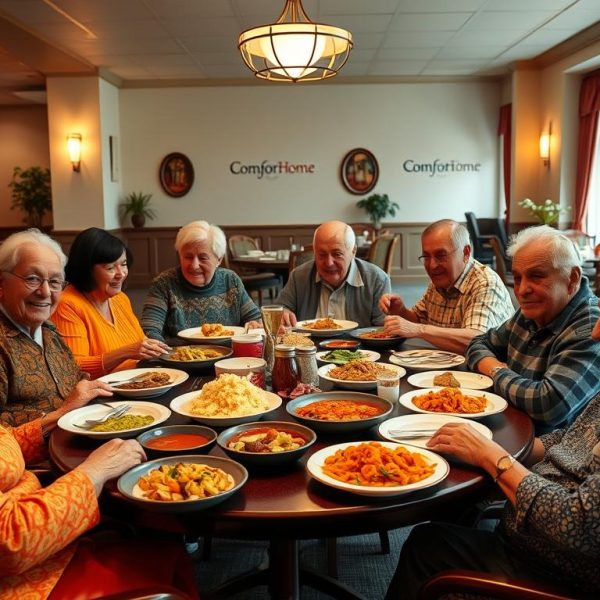Introduction
In the quaint town of Willow Creek, nestled among the gentle hills and vibrant gardens, lived Clara, a dedicated caregiver with a heart full of compassion. Clara had spent years providing support to individuals with varying needs, from the elderly in her community to children facing developmental challenges. However, she knew that effective caregiving wasn’t just about providing physical assistance; it was also about connecting on a personal level through communication styles.
In her journey, Clara discovered the profound impact of adapting her communication style to meet the unique preferences and needs of her care recipients. This is the story of how she learned to enhance her caregiving relationships through the art of personalized communication, enriching the lives of those she served and finding fulfillment in her own.
The Importance of Personalized Communication
Clara’s caregiving journey began when she was just a teenager, volunteering at a local nursing home. She vividly remembered her first day: the smell of antiseptic, the soft murmur of conversations, and the sight of residents sitting quietly in the common area. As she approached an elderly woman named Mrs. Jenkins, Clara was nervous yet determined to make a connection.
“Hello, Mrs. Jenkins! How are you today?” she greeted with a warm smile.
Mrs. Jenkins looked up, her eyes reflecting a mix of surprise and skepticism. “Who are you, dear? I’m not interested in chatting,” she replied curtly.
Clara felt deflated. It was her first attempt at caregiving, and she realized that her enthusiasm alone wasn’t enough. Over the following weeks, she observed how different residents responded to various communication styles. Some thrived on lively conversations, while others preferred quiet companionship. It was clear that understanding each individual’s needs and preferences was vital to building trust and rapport.
The Journey of Discovery
Fast forward a decade, Clara had become a skilled caregiver, known for her ability to connect with her care recipients. One day, while assisting Mr. Thompson, a 78-year-old gentleman who had recently lost his wife, Clara noticed he was withdrawn and unresponsive. Instead of pressing him to share his feelings, she decided to take a step back.
“Would you like to sit outside for a bit?” she suggested gently.
Mr. Thompson looked surprised but nodded slowly. As they settled on the porch, Clara decided to let the silence linger. She observed the beauty of the blooming flowers and the rustling leaves, allowing the natural surroundings to speak. After a few moments, Mr. Thompson finally broke the silence.
“You know, my wife loved this time of year,” he said, his voice softening.
Clara realized that by adapting her approach, she allowed him the space to express himself in his own time. This experience reaffirmed her belief in the importance of tailoring communication to meet individual preferences.
Understanding Individual Needs
One of Clara’s most valuable lessons came during her time with Sarah, a young woman with autism spectrum disorder. Sarah had unique communication needs, often relying on visual aids and structured routines. Clara took the initiative to learn about autism and how to communicate effectively with Sarah.
During their first meeting, Clara brought along a visual schedule that outlined their daily activities. “This is what we’ll do today,” she explained, pointing to the colorful pictures.
Sarah’s eyes lit up as she saw the visuals. “Can we start with art?” she asked, her excitement palpable.
From that day forward, Clara made it a point to integrate visual aids into their interactions. She learned to communicate not just with words but through pictures and gestures. This approach significantly improved Sarah’s engagement, allowing her to feel understood and empowered.
Adapting Communication Styles: Tips for Caregivers
Clara knew that every care recipient was unique, so she developed strategies to tailor her communication style effectively. Here are some of the techniques she found most helpful:
- Active Listening: Clara emphasized the importance of truly listening to her care recipients. She made a conscious effort to pay attention to their words, tone, and body language. By validating their feelings and responding with empathy, she fostered a sense of trust.
- Non-Verbal Communication: Understanding that non-verbal cues played a significant role in communication, Clara practiced maintaining eye contact, using gentle gestures, and mirroring the emotions of her care recipients. This helped bridge the gap when words were insufficient.
- Personalizing Conversations: Clara made it a point to learn about her care recipients’ backgrounds, interests, and preferences. Whether it was discussing their favorite hobbies or reminiscing about their childhood, personalizing conversations created a deeper connection.
- Adjusting Tone and Pace: Clara recognized that some individuals preferred a calm and soothing tone, while others thrived on enthusiasm. She adapted her vocal tone and speaking pace based on the recipient’s demeanor, ensuring her words resonated positively.
- Using Visual Aids: For those with cognitive impairments or language barriers, Clara found that using visual aids—such as pictures, charts, or simple diagrams—made communication more effective and engaging. This approach was particularly beneficial for individuals like Sarah.
- Encouraging Feedback: Clara often asked her care recipients for feedback about their preferences. “Is this okay?” or “Do you prefer this way of talking?” allowed her to adjust her style to meet their needs continually.
The Transformative Power of Connection
As Clara honed her communication skills, she witnessed remarkable transformations in her care recipients. Mr. Thompson, who had once been withdrawn, began to share stories of his wife and their adventures together.
One day, he surprised Clara by pulling out an old photo album. “Look at this,” he said, his eyes sparkling with nostalgia as he flipped through the pages. “We went to the beach every summer.”
Clara smiled, feeling privileged to share in his memories. Their connection deepened as he opened up about his life, and she knew that adapting her communication style had played a significant role in this transformation.
A Supportive Community
Recognizing the importance of shared experiences among caregivers, Clara also sought to create a supportive community. She organized monthly gatherings where caregivers could share their stories, challenges, and successes in adapting communication styles.
At one such gathering, Clara shared her experience with Mr. Thompson and Sarah. The caregivers listened intently, exchanging ideas and strategies. One caregiver, Mary, shared how she found success in using music therapy to connect with her elderly clients. Another caregiver, Raj, spoke about the effectiveness of incorporating technology, like tablet apps, to facilitate communication with individuals who had language barriers.
These gatherings became a source of inspiration and learning, strengthening the bonds between caregivers and enhancing their skills. Clara realized that by sharing experiences, they not only improved their own communication styles but also enriched the lives of those they cared for.
The Ripple Effect
As Clara continued to adapt her communication styles, the positive effects rippled through her life. She became more attuned to her own emotions and needs, fostering a greater sense of self-awareness.
One evening, after a long day of caregiving, Clara sat on her porch, reflecting on her journey. The sun was setting, casting a golden glow across the sky. She realized that her growth as a caregiver was deeply intertwined with her ability to communicate effectively. The connections she had formed with her care recipients enriched her life as much as it did theirs.
Embracing Change
With autumn in full swing, Clara embraced the changing season as a metaphor for growth and transformation. Just as the leaves changed colors and fell, she recognized the importance of adapting to new circumstances and needs in her caregiving journey.
She had learned that effective communication was not a one-size-fits-all approach but a dynamic process that required ongoing reflection and adjustment. Each care recipient was a unique individual with their own stories, preferences, and challenges. Clara’s ability to adapt her communication style became a powerful tool in fostering connections and enhancing the well-being of those she served.
Conclusion: The Heart of Caregiving
As winter approached, Clara stood at the threshold of a new chapter in her caregiving journey. With the lessons learned about personalized communication, she felt empowered to continue making a difference in the lives of her care recipients.
The warmth of connection, empathy, and understanding became the foundation of her caregiving philosophy. Clara knew that effective communication was not just about exchanging words; it was about building relationships, fostering trust, and nurturing the human spirit.
In the heart of Willow Creek, Clara continued to embrace her role as a caregiver, adapting her communication styles to meet the diverse needs of those she served. Each interaction became a testament to the power of connection, reminding her that the art of caregiving was not only about providing support but also about understanding, honoring, and celebrating the unique stories of every individual.








